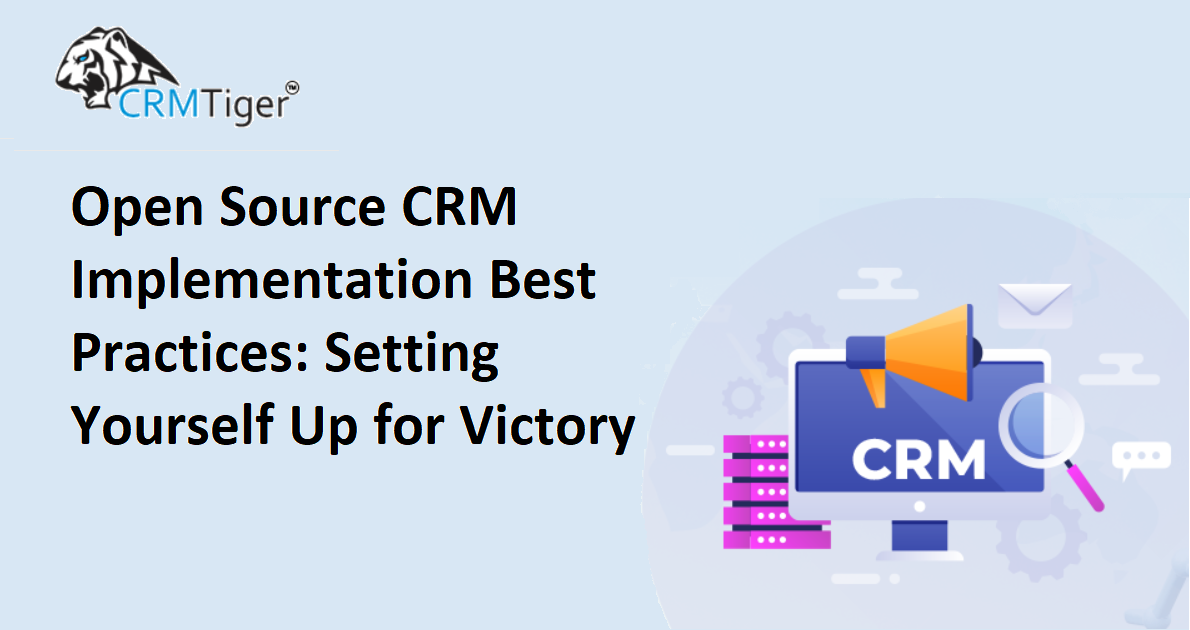
The Competitive Edge: Why Open Source CRM?
In today’s cutthroat market, Customer Relationship Management (CRM) is the secret weapon for happy customers, booming sales, and lasting connections. While big-name CRM solutions reign supreme, open-source alternatives are gaining serious traction. Why? Because they’re:
- Flexible: Tailor them to your unique business needs.
- Cost-Effective: Save big bucks compared to proprietary systems.
- Customizable: Make it work exactly how you want it to.
Open Source CRM: Your Path to Victory
Implementing an open-source CRM can be a game-changer, optimizing customer management without breaking the bank. But to truly win, you need a solid plan, clear goals, and a commitment to best practices. Here’s your winning playbook:
1. Define Your Mission: Goals and Requirements:
Before diving in, chart your course! Define your business goals and the must-have features for your CRM. Do you want to streamline sales, elevate customer service, or power up marketing campaigns? Knowing your objectives will guide you in choosing the perfect open-source CRM platform and making the right customizations.
2. Choose Your Champion: Selecting the Right Platform:
With a sea of open-source CRM options, picking the right one can feel overwhelming. Consider these key factors:
- Scalability: Can it grow with your business?
- Community Support: Who’s got your back when you need help?
- Customization Ease: How easy is it to tailor it to your needs?
- Integration Power: Can it connect seamlessly with your existing tools?
- Maintenance Needs: How much ongoing support will it require?
Popular contenders like SuiteCRM, SugarCRM, and Vtiger CRM each offer unique features, so choose the one that best suits your business needs.
3. Customize and Integrate for Success:
One of the biggest advantages of open-source CRM is the ability to mold it to your specific workflows. Plan any customizations needed to achieve your defined objectives. Additionally, ensure the CRM integrates smoothly with your existing business applications, like ERP systems, marketing automation tools, or e-commerce platforms. Seamless integration creates a unified view of customer data across all touchpoints.
4. Invest in Your Team: Allocate Resources:
Implementing an open-source CRM requires a dedicated team. This includes skilled personnel for customization, IT infrastructure for hosting (cloud or on-premises), and ongoing support and maintenance. Allocate sufficient budget and manpower to ensure a smooth implementation and continuous optimization post-deployment.
5. Train and Empower Your Users:
User adoption is the key to victory! Provide comprehensive training sessions to users across departments. Familiarize them with the system’s functionalities and benefits. Encourage feedback and address concerns early on to overcome resistance to change and ensure a smooth transition.
6. Data: The Heart of Your CRM:
Data is the lifeblood of your CRM system. Ensure its accuracy by establishing clear data entry standards and protocols. Implement robust security measures to protect sensitive customer information and comply with data protection regulations. Regularly audit your CRM database to maintain data hygiene and optimize system performance.
7. Monitor, Analyze, and Adapt:
After launch, track key performance indicators (KPIs) related to sales, customer satisfaction, and operational efficiency. Gather user and stakeholder feedback to identify areas for improvement. Continuously refine and optimize your CRM strategy based on your findings. Remember, it’s all about maximizing your return on investment (ROI).
8. Join the Open Source Community: A Valuable Resource:
Don’t go it alone! Leverage the vibrant open-source community associated with your chosen CRM platform. Participate in forums, attend user group meetings, and contribute to the development of plugins or extensions. The community can provide valuable insights, support, and enhancements to further customize your CRM solution.
Conclusion: Own Your Customer Relationships:
Implementing an open-source CRM requires careful planning, strategic alignment with business goals, and diligent execution. By following these best practices, you’ll be well on your way to building stronger customer relationships, boosting operational efficiency, and achieving sustainable business growth. Embrace the flexibility and affordability of open-source CRM to transform your organization into an agile and customer-centric powerhouse.
Hope you found this blog useful.
We would be happy to assist you.
Please contact us on info@crmtiger.com if you needed further help from us.
Let us know if you need more information on this


Leave a Reply